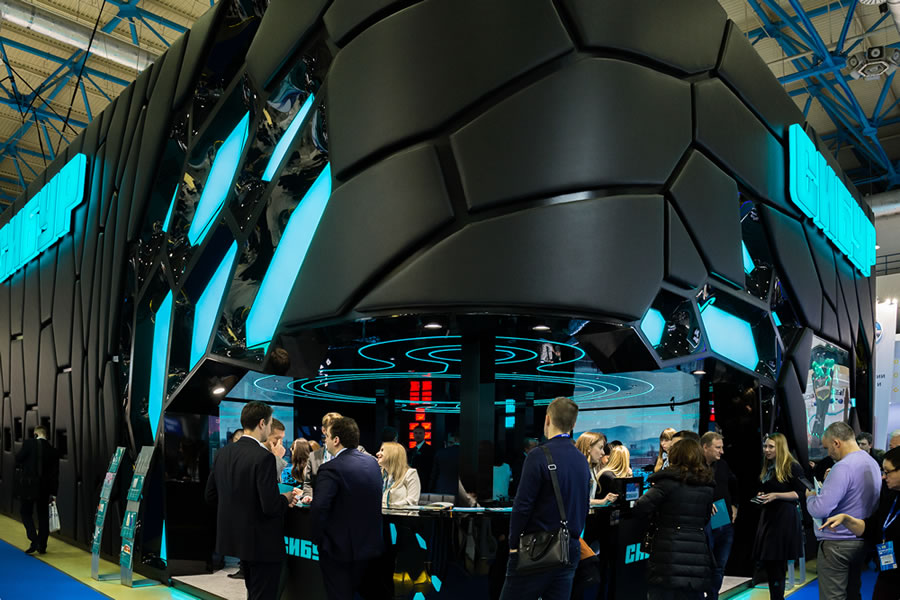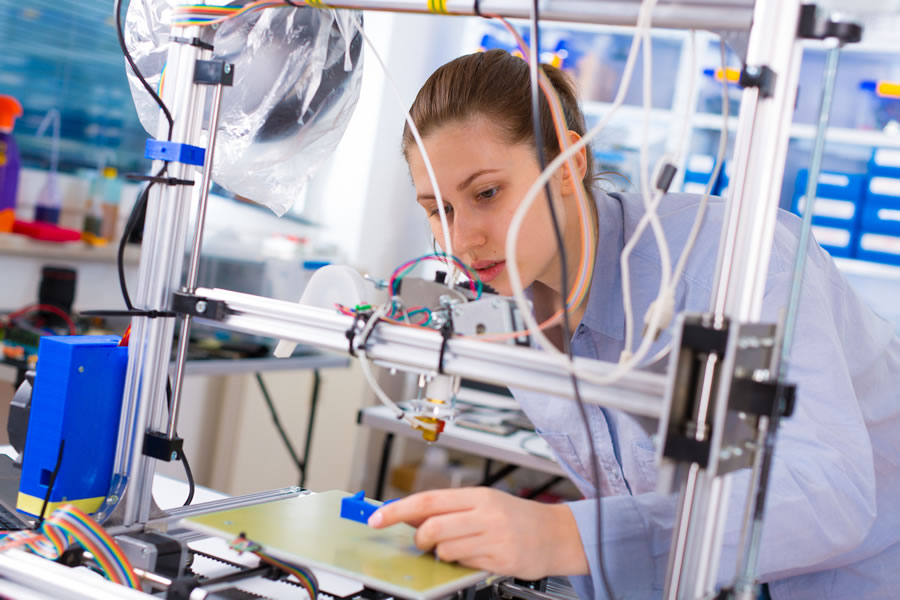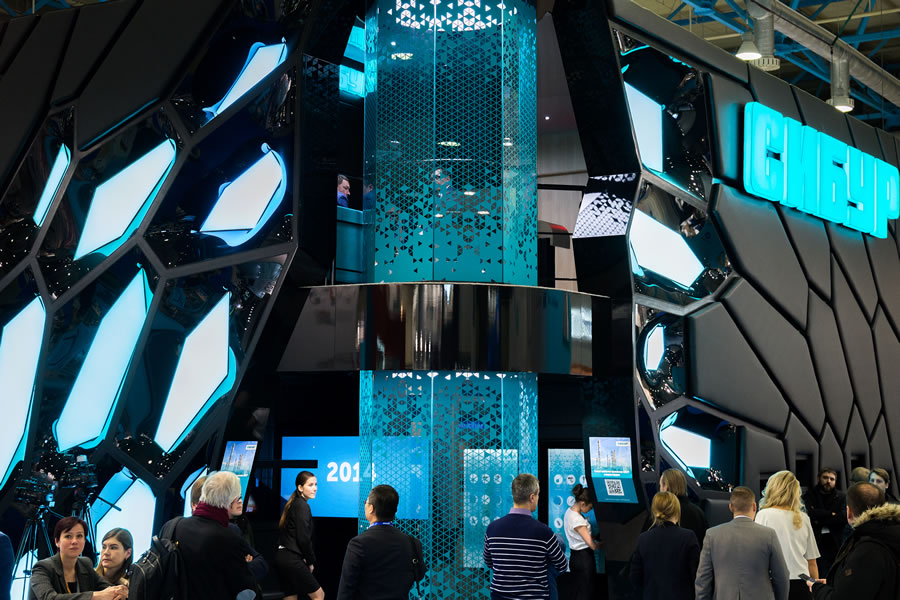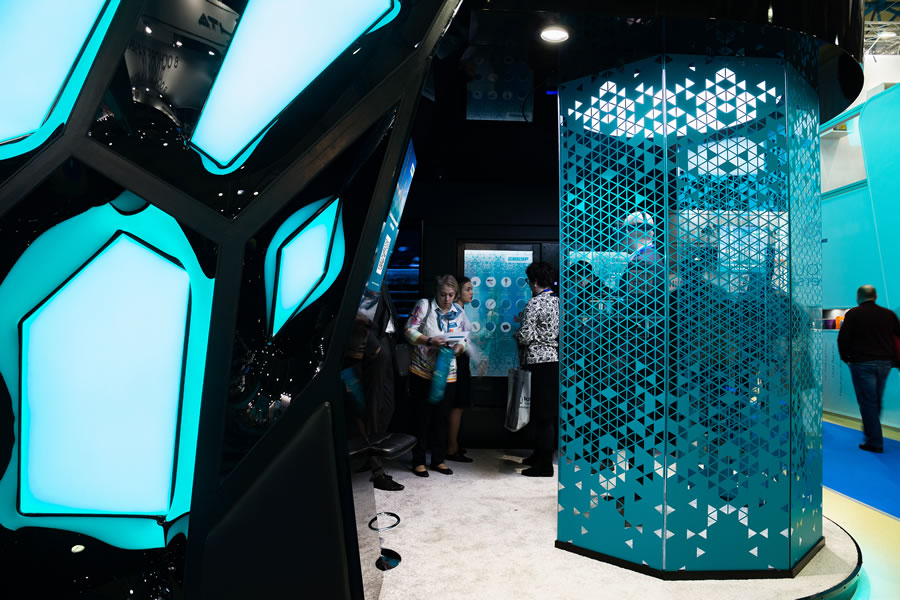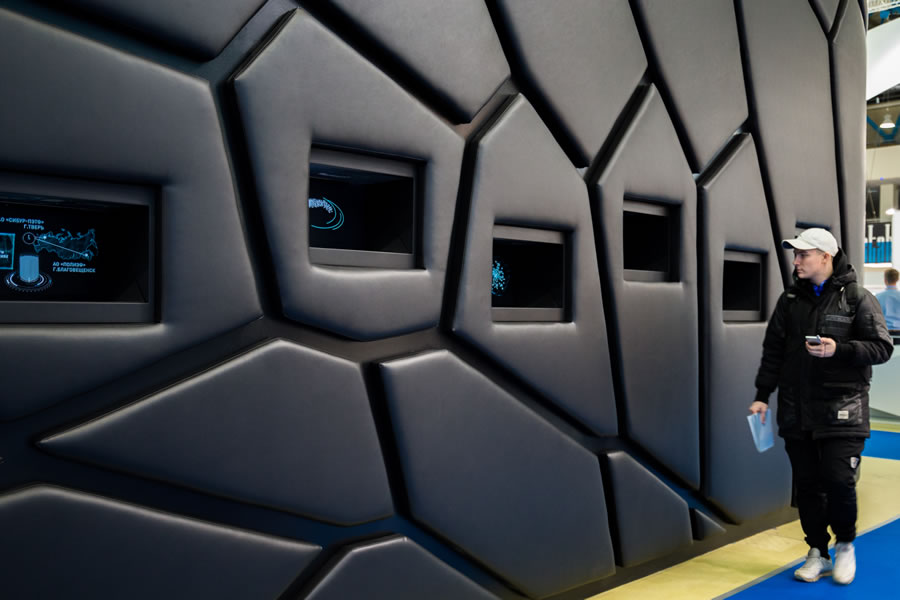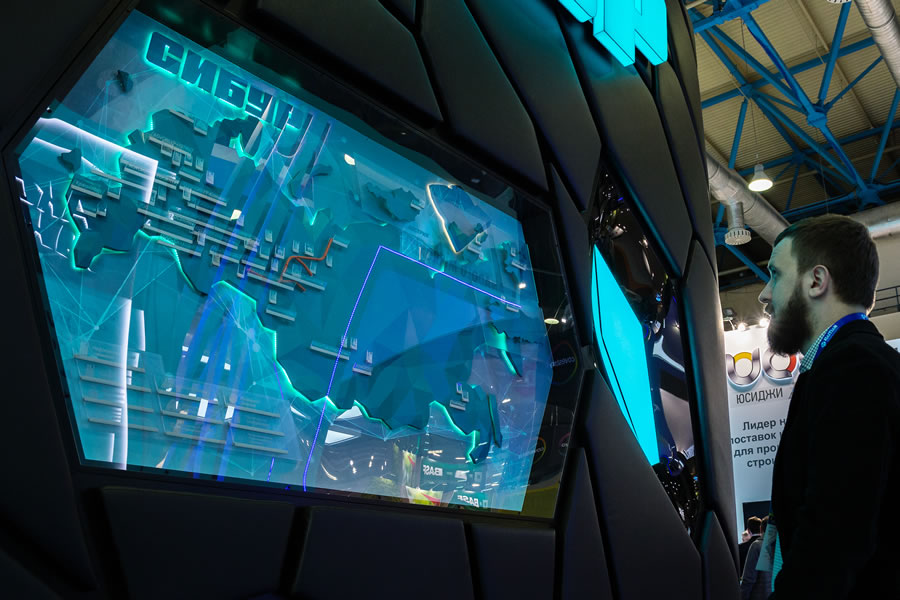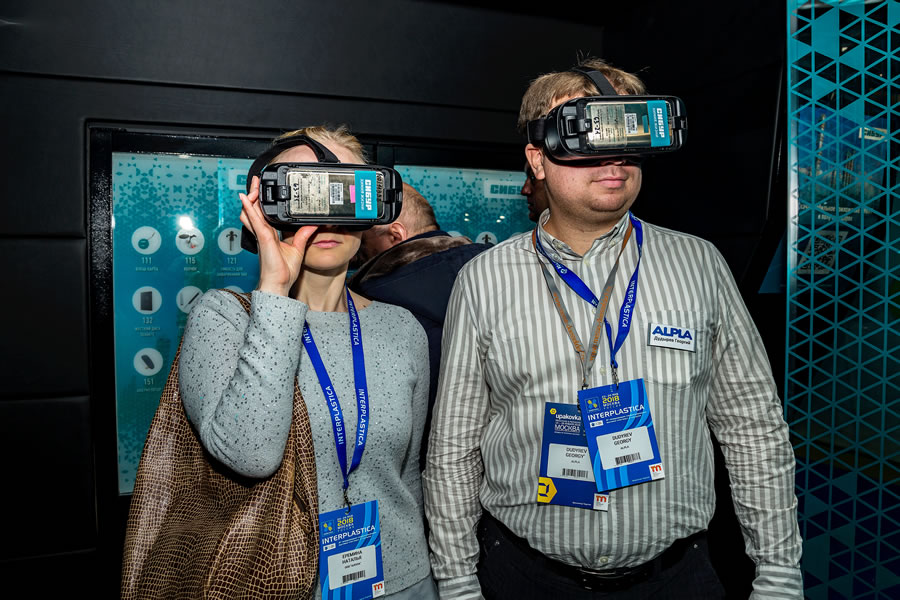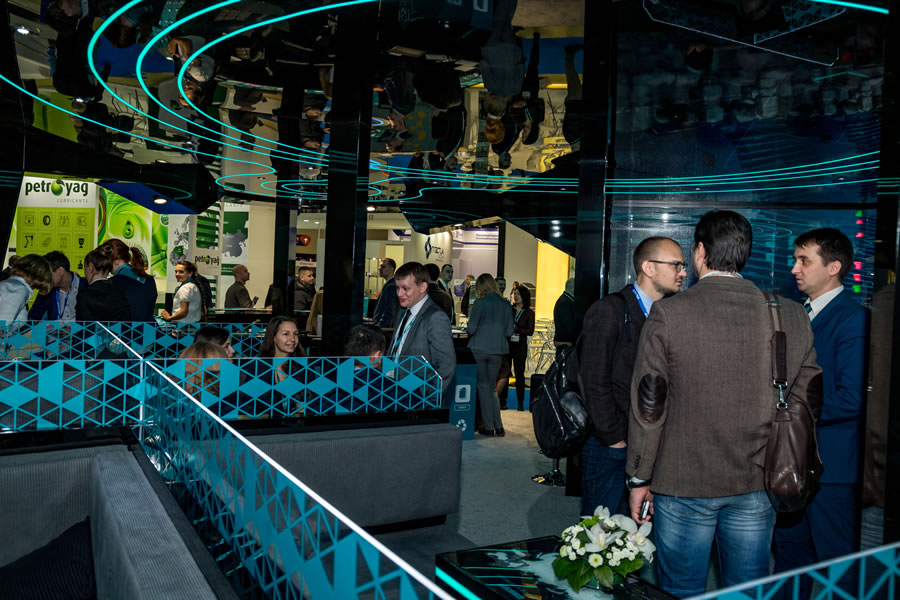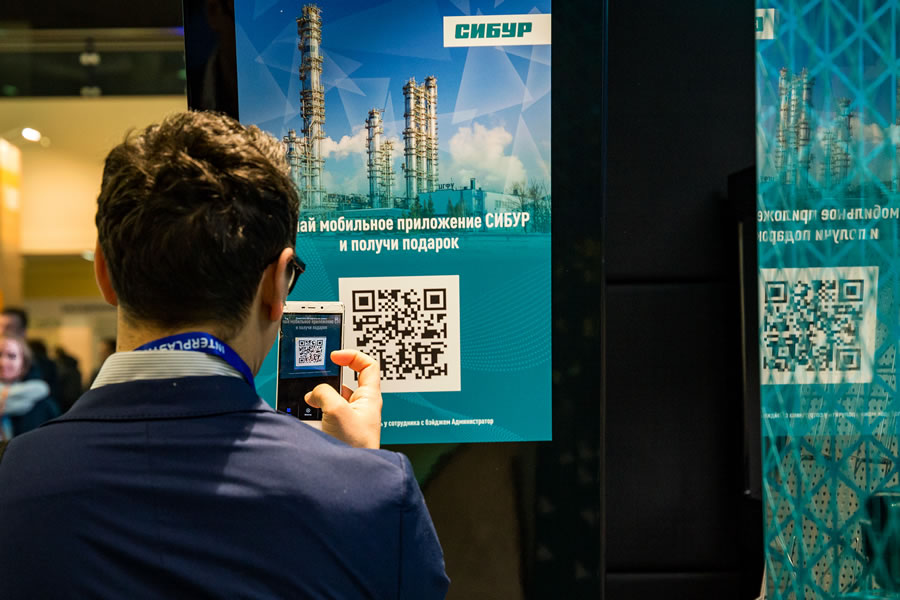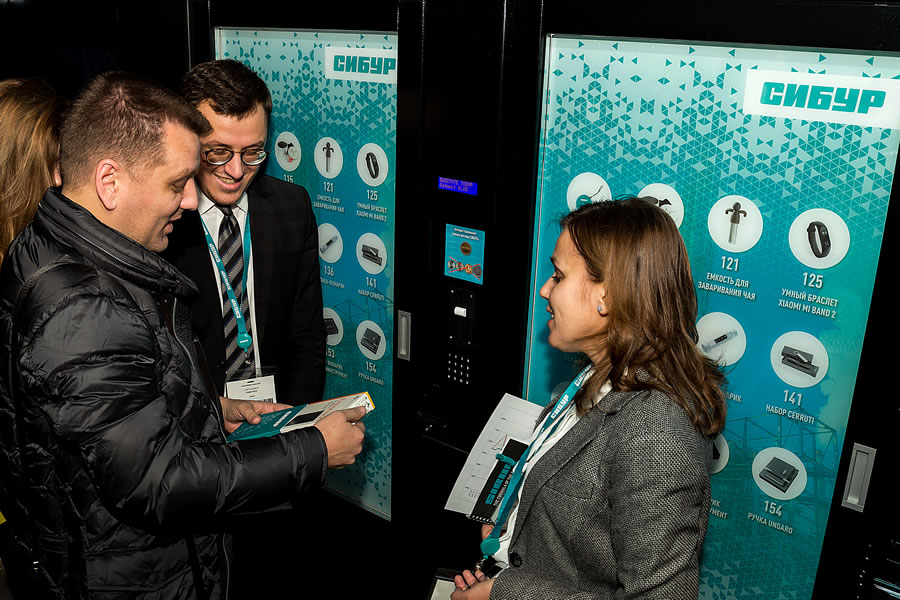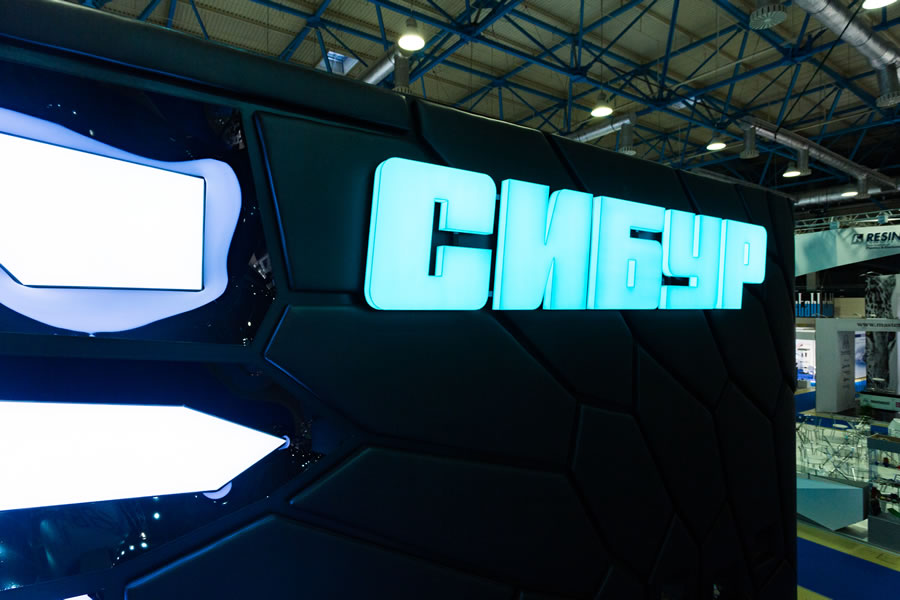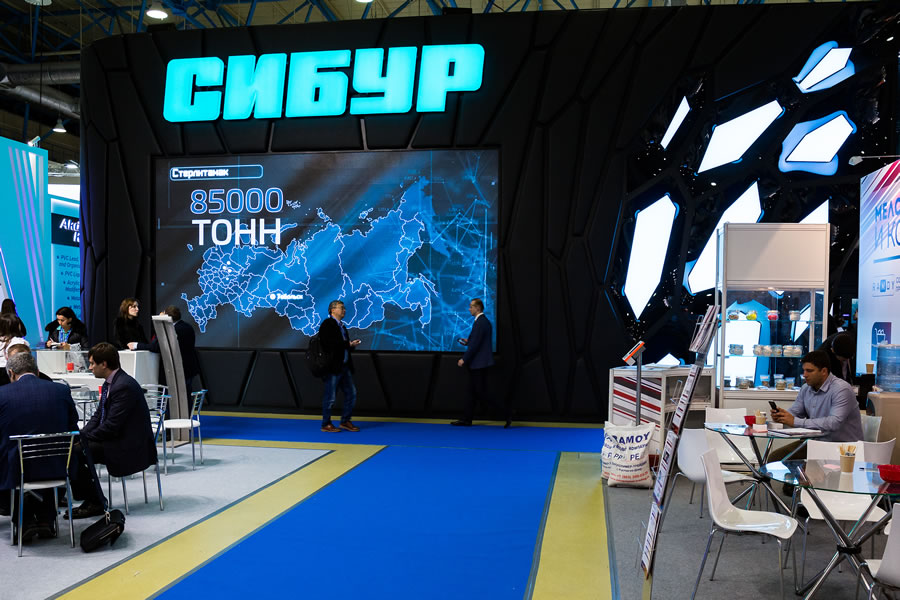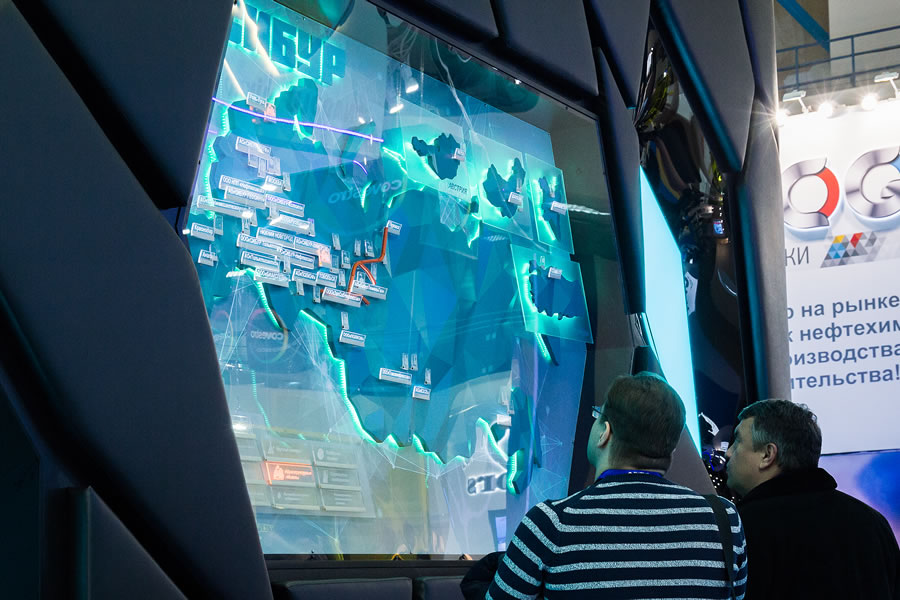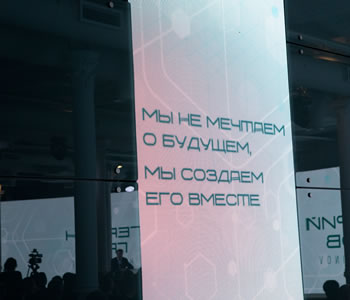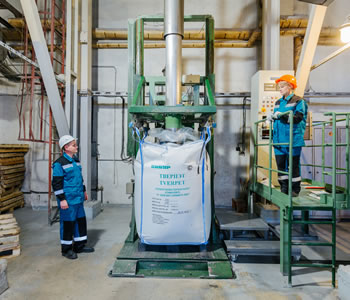The 21st International Plastics and Rubber Trade Fair was held at Moscow’s Expocentre on 23–26 January. Production of raw and auxiliary materials, plastic and rubber products, and specialised equipment are the key market segments for the exhibition’s participants.
24,900 people
visited Interplastica 2018 in four days (from 23 to 26 January)
680 companies
showcased their products at Interplastica this year
32 countries
had businesses present at Interplastica 2018
Quick threads
At this year’s Interplastica, SIBUR presented special polypropylene grades that many manufacturers in Russia use as the basic feedstock for their polymer products. The SIBEX brand of special PP grades includes a total of five groups designed to meet the needs of each market segment (production of plastic pipes, packaging, threads, and various films). The five groups are further divided into more than 20 special grades of PP, with some of them boasting properties previously unmatched by Russian polymers.
“For example, the new SIBEX PP H032 FF grade (SIBEX Raffia segment) is designed for the production of a film thread for big and plastic bags at a speed of 550 metres per minute – that’s the fastest of what today’s equipment can offer. The previous generation of the machinery was only capable of making threads at 450 metres per minute tops,” says Konstantin Vernigorov, Head of Product and Technological Development at SIBUR's Basic Polymers Division. “We developed this grade jointly with Starlinger, which at the time was preparing for the market launch of new high-speed equipment and provided us with samples to have them tested. SIBUR is committed to teaming up with partners that would like to see new technological solutions available. Today, we already have PP H063 FF in commercial production on an ongoing basis, with the grade featured in SIBUR’s product portfolio.”
Another product created by SIBUR with Starlinger is a special UV-stabilised grade for thread production. End products can be exposed to direct sunlight with no risk of damage, which is clearly not the case for standard polypropylene grades. Following the initial 100 tonnes made available in Q4 2017, the product is now in the final phase of testing by the clients. SIBUR also developed similar UV-stabilised materials as feedstock for fibres and nonwoven fabrics used in outdoor environments.
At this year’s Interplastica, SIBUR presented special polypropylene grades.
Go-to alternative
SIBUR ended 2017 as the absolute leader in the BOPP film market, covering 70% of demand from the Customs Union countries.
Another new product presented by SIBUR at Interplastica is the EPS boards used for road embankments. “We plan to replace sand as the traditional construction material and turn to EPS blocks instead,” says Sergey Latyshev, Chief Expert at SIBUR’s Plastics and Organic Synthesis Division. “Putting in place a typical embankment requires some 35,000 cubic metres of sand. To have this amount transported fr om the open pit to the site, construction companies, on average, use more than 3,000 trucks. The polymer has a considerably lower weight than sand, meaning reduced transportation costs. Also, the limited weight of EPS blocks helps to diminish the load on the soil and makes it possible to do without the steel pipes required if sand is used.”
EPS comes in especially handy for regions with deep ground freezing as a factor contributing to quick road damage. Layer of expendable polystyrene used as a basis for road construction offers effective protection against temperature stress and reduces deformation. EPS blocks are also resistant to seismic activities, making them a frequent choice for road embankments in Japan.
EPS blocks are also resistant to seismic activities, making them a frequent choice for road embankments in Japan.
The polymer has a considerably lower weight than sand, meaning reduced transportation costs. Also, the limited weight of EPS blocks helps to diminish the load on the soil and makes it possible to do without the steel pipes required if sand is used.
“Another area of EPS application is to reduce the weight of underground structures. For example, Knauf’s blocks made of SIBUR polymer feedstock are used in the construction of the lobby at Borovskoye Shosse, a new station of the Moscow metro slated for commissioning in the first half of 2018,” says Dmitry Bobkov, Project Sales Manager at Knauf.
EPS blocks are also employed in the construction of an extension at Sofiyskaya Street in St Petersburg. According to Knauf’s experts, EPS blocks made of SIBUR’s polymers have an estimated useful life of 100 years and longer, which is evidenced by the functional tests.
Government focus
A variety of discussions at the exhibition were grouped under the Polymer Plaza platform supported by SIBUR focusing on the key areas of growth and government regulation of the plastic processing segment in Russia. In the recent years, the industry has been one of the priorities for the government. According to the Ministry of Industry and Trade, the chemical sector received some RUB 5.75 bn in state aid in 2017, which represents a 2.4-fold increase above the level of 2016. Moreover, jointly with the Ministry of Energy and related government agencies, the Ministry of Industry and Trade initiated the creation of a road map to develop plastic processing for the period until 2025 as part of the Strategy for the Development of the Chemical and Petrochemical Sectors through 2030. Of special importance in this context was a round table discussion organised by SIBUR and titled Polymer Processing as Part of the Reform of Waste Management in Russia: Meeting Environmental Challenges Based on Cost-Effective Business. The event brought together representatives of the Ministry of Industry and Trade, SIBUR, PlasticsEurope trade association, Clean City Group, EcoTechnologies Group, RUPEC think tank and the Russian Chemists Union. More information is available here.
As part of the business programme, leading departments of five Russian universities focusing on plastic processing made presentations about education and young talent training for the benefit of the industry, which predictably sparked increased attention from market players.
The event also hosted 3D fab+print, a special conference on additive technologies wh ere Russian and international experts discussed the benefits offered by the combination of additive technologies and achievements in the polymer industry. Everyone was unanimous: with polymers as its key material, 3D printing is set to have an increasingly strong influence on the petrochemical industry.
With polymers as its key material, 3D printing is set to have an increasingly strong influence on the petrochemical industry.
Everyone was unanimous: with polymers as its key material, 3D printing is set to have an increasingly strong influence on the petrochemical industry.
“As the largest event in the polymer industry of Russia and the nations of the Customs Union, Interplastica is certainly extremely important for all the market players, including SIBUR,” says Vladimir Proskuryakov, Head of Marketing at SIBUR's Plastics, Elastomers and Organic Synthesis Division. “This is a successful forum that annually brings together the world’s leading petrochemical companies, processing facilities, and equipment manufacturers to help them negotiate, hold meetings, and look for new and exciting cooperation opportunities. Interplastica 2018 was no exception, facilitating talks and providing space for presentations that enabled businesses to gauge market needs, align actions with partners and clients, and fine-tune their operations as needed.”
Grounds for optimism
All of SIBUR’s innovations rely on a fairly optimistic market outlook, and there are good grounds for that. “In 2017, almost all segments that SIBUR focuses on saw expansion year-on-year,” says Pavel Lyakhovich, member of the Management Board and Managing Director at SIBUR. “The prospects look very promising, especially given the growing demand from key consuming segments, above all construction, food industry, agriculture, and automotive production. I believe that the rise in petrochemical production is largely the result of the government’s successful efforts to replace imported products as a way to make the national economy less reliant on supplies from abroad.”
Most of the exhibition participants said they were happy with how 2018 had started. The market expects business activity in this season to be solid. “January 2018 was much better than January last year, and this is yet another sign of positive changes in the industry,” says Alexander Kling, Head of Business Development, Eastern Europe and CIS, at Biesterfeld Plastic.
“The Russian polymer industry is growing and evolving. This is something we see from the government statistics, activity here at Interplastica 2018, and projects run by our clients,” says Roman Kizimov, CEO of TD Plastic-Uzlovaya. “Our key market of ABS plastics is estimated to have grown by 2.4% in 2017 compared to 2016. In 2017, we stepped up our domestic supplies by 13.6% in volume terms in response to the stronger demand from producers of sheets, compounds, and FMCG.”
All of SIBUR’s innovations rely on a fairly optimistic market outlook..
Season for development is coming
“SIBUR ended 2017 as the absolute leader in the BOPP film market, covering 70% of demand from the Customs Union countries. In the new season, we plan to build on our success and keep expanding, supported by BIAXPLEN’s focus on complex products to add to the domestic and international product offering,” says Maria Borisova, BIAXPLEN’s Marketing and Sales Director.
“For the Russian PET market, 2017 was a good year, delivering a 2–3% growth,” comments Vladimir Proskuryakov, Head of Marketing at SIBUR's Plastics, Elastomers and Organic Synthesis Division. “We expect this growth in consumption to continue into the next years, among other things thanks to SIBUR’s efforts to develop its product range in the segment. At the same time, demand for new grades, such as high viscosity PET for beer kegs, will be growing at an accelerated pace. In the polystyrene market, the situation looks less optimistic due to problems in the construction industry – the key consumer of heat-insulating panels from this material. In 2017, the demand for polymer insulation was flat against the previous year, but we expect the market to get back on the growth track this season.”
Download PDF

